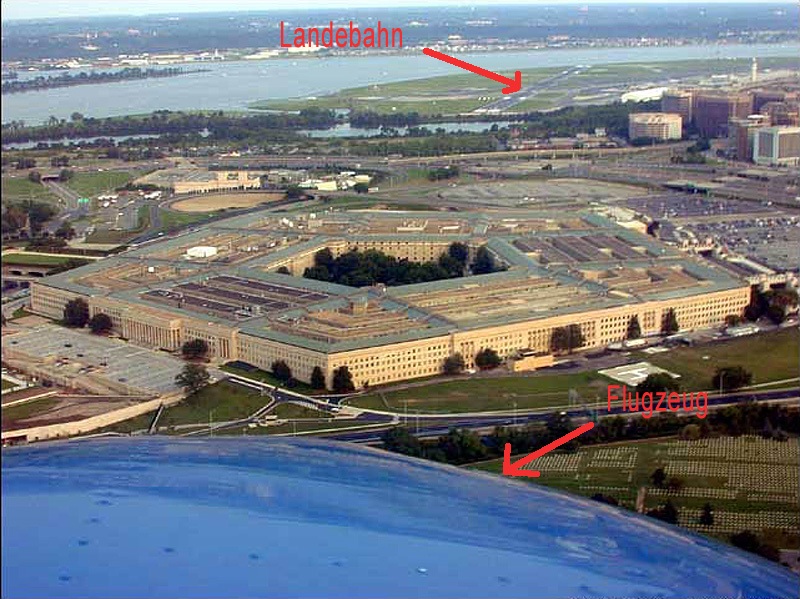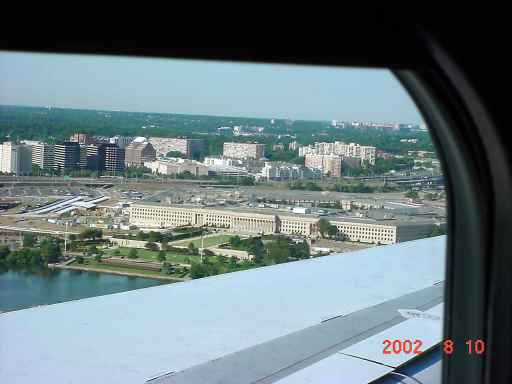|
|
| [Home] [Pentagon] [Pentagon Missile Batteries] |
|
The story... It is... impossible that a Boeing 757 could enter the Pentagon's air space without being destroyed by one or more of the five missile batteries protecting the building. The Pentagon is ringed by anti-missile [sic] batteries which are programmed to destroy any aircraft entering the Pentagons airspace except for any aircraft with a US military transponder. Our take... Me: Do you have any theory about how a Boeing 757 could have hit such a secure building without any anti-aircraft defenses being activated or any warning alarms sounded? However, in the last part Gallop appears to be talking about using fighters, not missiles, which won’t “guide” the incoming aircraft anywhere. And she’s not confirming an automatic shoot-down of anything that “violated the airspace”, which is probably just as well. More than 2,000 aircraft "of interest" have been detected over Washington airspace since January 2003, Beardsworth said. The number of aircraft violating the no-fly zone fell from 164 in the six months before Jan. 20, 2003, to 30 after that date through May, 14, 2004. Fourth, even the fallback position of manually operated batteries wouldn't really help. Because at what point would you make the shootdown decision? At an average of 400 mph, any plane approaching the Pentagon would cover the final mile in around 9 seconds. A plane could divert from a normal approach path to the airport in an even shorter period, a major problem because it takes time for missiles to launch, detect and move in on an attacker. If you can’t launch before the target is inside your minimum range (which could be half a mile or more) then you have no chance of hitting it. Pentagon arms missile batteries around D.C. No mention of any earlier Pentagon missile batteries here. Some confirmation comes in Richard Clarke’s “Against All Enemies”, where he says plans for air defence were rejected (the dates of these events aren’t made precisely clear, but the account comes from a chapter entitled “The Almost War, 1996): The Secret Service and Customs had teamed up in Atlanta to provide some rudimentary air defense against an aircraft flying into the Olympic Stadium. They did so again during the subsequent National Security Special Events and they agreed to create a permanent air defense unit to protect Washington. Unfortunately, those two federal law enforcement agencies were housed in the Treasury Department and its leadership did not want to pay for such a mission or run the liability risks of shooting down the wrong aircraft. Treasury nixed the air defense unit, and my attempts within the White House to overrule them came to naught. The idea of aircraft attacking in Washington seemed remote to many people and the risks of shooting down aircraft in a city were thought to be far too high. Moreover, the opponents of our plan argued, the Air Force could always scramble fighter aircraft to protect Washington if there were a problem. On occasions when aircraft were hijacked (and in one case when we erroneously believed a Northwest flight had been seized), the Air Force did intercept the airliners with fighter jets. We succeeded only in getting Secret Service the permission to continue to examine air defense options, including the possibility of placing missile units near the White House. Most people who heard about our efforts to create some air defense system in case terrorists tried to fly aircraft into the Capitol, the White House, or the Pentagon simply thought we were nuts. It seems if there were missile defences on 9/11, then Clarke didn’t know about them. |
| [Home] [Hijackers] [Foreknowledge] [Stand down] [WTC (demolition)] [WTC (other)] [WTC7 and Silverstein] [Pentagon] [Flight 93] [bin Ladin] [Obstructing Justice] [Afghanistan] [Others] [Investigations, more] [What's New?] |


